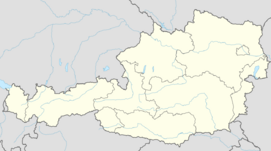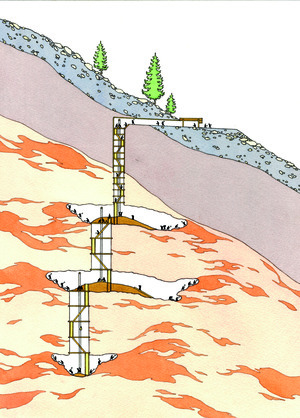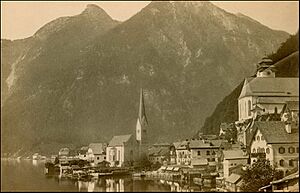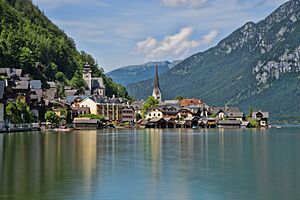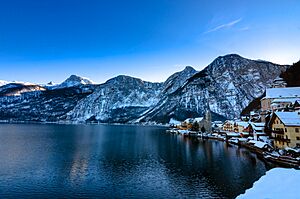Hallstatt facts for kids
Quick facts for kids
Hallstatt
|
||
|---|---|---|
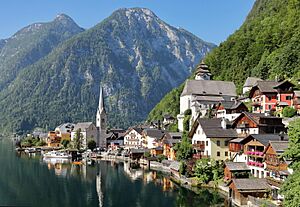
The centre of Hallstatt
|
||
|
||
| Country | Austria | |
| State | Upper Austria | |
| District | Gmunden | |
| Area | ||
| • Total | 59.83 km2 (23.10 sq mi) | |
| Elevation | 511 m (1,677 ft) | |
| Time zone | UTC+1 (CET) | |
| • Summer (DST) | UTC+2 (CEST) | |
| Postal code |
4830
|
|
| Area code | 06134 | |
| Vehicle registration | GM | |
| Website | www.hallstatt.at | |
Hallstatt is a small town in Austria. It is located in the Gmunden District in the state of Upper Austria. The town sits between the beautiful Hallstätter See lake and the tall Dachstein mountains. It is part of the Salzkammergut region.
Hallstatt is famous for making salt. People have been mining salt here since ancient times. A very old culture, the Hallstatt culture, is even named after this town. This culture was made up of early Celtic people during the Early Iron Age in Europe, from about 800 to 450 BC.
In 1997, UNESCO named Hallstatt a World Heritage Site. This means it is a place of great importance to the world. Because it is so beautiful and famous, many tourists visit, which can sometimes be a challenge for the small town.
Contents
History of Hallstatt
| UNESCO World Heritage Site | |
|---|---|
| Part of | Hallstatt-Dachstein / Salzkammergut Cultural Landscape |
| Criteria | Cultural: iii, iv |
| Inscription | 1997 (21st Session) |
| Area | 28,446.2 ha |
| Buffer zone | 20,013.9 ha |
Long ago, during the Bronze Age, making salt became a huge business in Hallstatt. People produced large amounts of salt in a very organized way. Special workers helped with the salt mining. The great wealth they earned can be seen in the ancient cemeteries of Hallstatt.
In 1846, a man named Johann Georg Ramsauer found a large ancient cemetery near the salt mines. He dug up the site during the second half of the 1800s. Eventually, he found 1,045 burials. No ancient settlement has been found yet, but it might be hidden under the modern village.
About 1,300 burials have been found, with around 2,000 people, including women and children. The people who lived in Hallstatt used the salt mines from the 8th to 5th centuries BC. The items found in the graves are very unique. Inside the mines, the salt helped preserve many old things like clothes, wood, and leather. Many abandoned items, such as shoes, cloth pieces, tools, and miner's backpacks, are still in good condition.
The Hallstatt culture is divided into different periods. Hallstatt A and B are part of the Bronze Age Urnfield culture. In Hallstatt A, people were cremated and buried in simple graves. In Hallstatt B, tumulus (mound) burials became common, and cremation was still the main practice. The "Hallstatt period" itself refers to Hallstatt C and D (8th to 5th centuries BC), which is the early European Iron Age.
Hallstatt C is known for the first iron swords. Hallstatt D shows daggers instead of swords in graves from about 600 to 500 BC. There were also differences in pottery and brooches. Major activity at the site seemed to stop around 500 BC. Many Hallstatt graves were robbed around this time.
Hallstatt from Roman Times to the 19th Century
People say that Hallstatt has "the world's oldest pipeline." It was built 400 years ago from 13,000 hollowed-out trees. There is so little space for cemeteries in Hallstatt that, for a long time, bones were dug up every ten years. They were moved to an ossuary (a building for bones) to make room for new burials. You can see a collection of decorated skulls in the local chapel. Each skull has the person's name, job, and date of death written on it.
Until the late 1800s, you could only reach Hallstatt by boat or by narrow trails. There was very little land between the lake and the mountains. The town used every bit of available space. To get between houses on the lake bank, people used boats or a small path that went through attics. The first road to Hallstatt was built in 1890. It was built along the west shore, partly by blasting rocks. Even though it was hard to reach, Hallstatt was one of the first places where people settled. This was because of the rich natural salt sources, which have been mined for thousands of years.
Hallstatt Salt Mine
The Hallstatt salt mine is the oldest working salt mine in the world. It is located within a special rock formation called the Haselgebirge Formation. The Hallstatt salt mine has 21 levels and many smaller tunnels. These tunnels range from 514 meters (1,686 feet) above sea level to about 1,267 meters (4,157 feet) high.
Tourism in Hallstatt
Tourism in Hallstatt started in the 1800s. It grew a lot after Hallstatt became a UNESCO World Heritage Site in 1997. The town became very popular with East Asian tourists in 2006. This happened after it was shown on a South Korean television show.
Pictures of Hallstatt on social media, often called "the most Instagrammable town in the world," became very popular. In 2013, some people thought Hallstatt was the model for the village of Arendelle in the movie Frozen. The filmmakers said the village was based on research in Norway and Canada, not Austria. However, these rumors still made more day tourists visit.
Interesting Places to See
Hallstatt has some amazing places to visit:
- Hallstatt Skywalk: Also known as the "World Heritage View," this platform offers a stunning view of the UNESCO World Heritage Site. It is 360 meters (1,181 feet) above Hallstatt. From here, you can see the village, Lake Hallstatt, and the surrounding Dachstein Alps.
- Hallstatt Ossuary (Beinhaus): This unique place is in St. Michael's Chapel. It has more than 1,200 human skulls. About 600 of these skulls are painted with symbols, names, and dates. This tradition of painting skulls started because there was not enough space for burials in the village. Today, the Ossuary reminds us of Hallstatt's long history. It also shows us the local burial customs and beliefs.
- Hallstatt Museum and Excavations: The Hallstatt Museum takes you deep into the ancient history of the area. It especially focuses on its role in the salt trade. The museum has items from the Hallstatt culture, dating back to the Bronze and Iron Ages. These include tools, weapons, and burial objects. The museum also highlights archaeological digs nearby. These digs show us how complex the Hallstatt civilization was.
Managing Many Visitors
The challenges of having many tourists in Hallstatt were discussed in The Washington Post in 2019. By 2017, local churches even had people to prevent tourists from interrupting services. In 2020, Hallstatt had about 780 residents. However, estimates showed 10,000 to nearly 30,000 tourists visited each day. Most came on bus tours for quick photo stops.
Tourism is important for Hallstatt's economy. But locals said that day-visitors made tourists who would stay longer go away. Hallstatt became a main example of overtourism in Austria. This led to discussions about limiting the number of tourists. The Austrian Public Broadcasting Organization made documentaries about the situation.
In 2020, the town started focusing on "quality" tourism. From autumn 2020, tour buses had to book specific time slots. The number of buses allowed was limited to 54 per day, about half of what was allowed before. Buses with an overnight booking in the town were given priority.
In 2023, locals protested against too much tourism. In May, two fences were built to stop tourists from taking selfies. These were removed after people complained on social media. In August, protesters blocked the entrance to a tunnel where buses enter the town. The mayor announced plans to reduce the number of buses even more.
International Connections
Twin Town
Hallstatt is twinned with:
Replica Town
On June 16, 2011, plans to build a copy of Hallstatt in China were first reported. On June 2, 2012, it was reported that a Chinese mining company built a full-size copy of the entire town in Huizhou, Guangdong province. In 2022, the Chinese town of Hallstatt was used as a filming location. It was the final spot for the 12th episode of the Korean TV series Money Heist: Korea – Joint Economic Area. In the show, it was called Kherson in Ukraine.
Climate
Hallstatt has a humid continental climate. This means it has warm, rainy summers and chilly to cold, snowy winters. It rains a lot all year, but especially in June, July, and August. Spring is a short season in March and April. By mid-November, it turns to winter. The growing season for plants is from April to early November.
See also
 In Spanish: Hallstatt para niños
In Spanish: Hallstatt para niños



